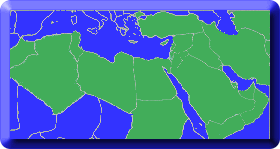
Topics in Middle Eastern and North African Economies
Document Type
Article
Publication Date
5-1-2017
Journal Title
Topics in Middle Eastern and North African Economies
Volume
19
Issue
1
Publisher
Middle East Economic Association and Loyola University Chicago
Abstract
Following the world financial crisis beginning in the last quarter of 2008, aggregate demand and commodity prices have declined sharply leading to a fast decline in world inflation. This different and new period reflects the rise in risk appetite leading to high fluctuations in the short term capital flows. World central banks revised their monetary policy to the changing conditions taking into account financial stability. In 2002, Turkish central bank adopted inflation targeting (in the implicit form) to maintain price stability. After 2008, following the developments in global markets, Turkish economy reflects similar characteristics in the form of decline in inflation rates. Together with the changes in the economic conditions, estimating monetary policy models in the form of constant-coefficient and symmetric specification may lead to erroneous interpretations. This study analyze the existence of structural break(s) and asymmetric behavior for the 2003-2016 period. The paper also examines the monetary policy model under New Keynesian fashion. Turkish monetary policy investigated for the period presents October 2009 as the break point under different models and structural break tests. Asymmetric reactions to interest rate, output and exchange rate are observed suggesting the different monetary preferences of the central bank of Turkey
ISSN
2334-282X
Recommended Citation
Aslanoğlu, Erhan and Deniz, Pinar, "Asymmetry in Inflation Targeting". Topics in Middle Eastern and North African Economies, electronic journal, 19, 1, Middle East Economic Association and Loyola University Chicago, 2017, http://www.luc.edu/orgs/meea/
Creative Commons License

This work is licensed under a Creative Commons Attribution-Noncommercial-No Derivative Works 3.0 License.
Copyright Statement
© 2017 The Authors



Comments
Presentation of the articles in the Topics in Middle Eastern and North African Economies was made possible by a limited license granted to Loyola University Chicago and Middle East Economics Association from the authors who have retained all copyrights in the articles.